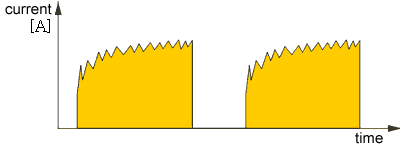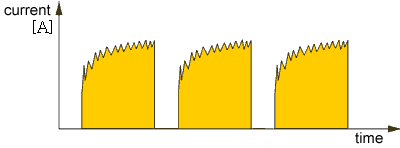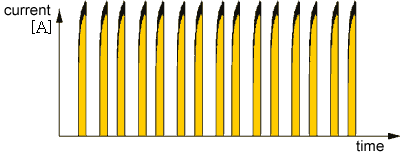5. Machining conditions by materials
Suitable machining conditions are different depending on the materials of electrodes and workpiece.
1) Electrode material: Copper - Workpiece material: Steel
The "polarity" is generally "reverse polarity" for areas from rough machining to finishing.
The effect of reduction of electrode wear by making "τon" longer becomes bigger in comparison with other electrode materials.
When the finished surface roughness is fine, "polarity" is set "positive" in order to enable efficient machining by small discharge pulses.

2) Electrode material: Graphite - Workpiece material: Steel
The "polarity" is generally "reverse polarity" for areas from rough machining to finishing.
Because discharge pulse is easy to occur, and is easy to be in an abnormal condition caused by the partial concentrated discharge; "τon" is set shorter in comparison with copper as electrode material.

3) Electrode material: Copper tungsten - Workpiece material: Cemented Carbide
Since cemented carbide is difficult to dissolve by heat, it is suitable for machining by thermal shock.
Therefore, the "polarity" is set "positive", "τon" is set extremely short, and "peak current level" is set extremely high.

